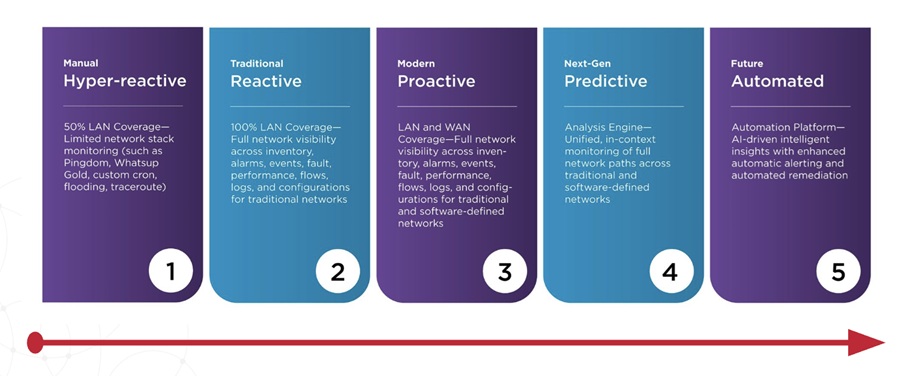
LogDNA announced that cybersecurity investment and advisory firm NightDragon will lead a Series D funding round of $50 million with participation from existing investors Emergence and Initialized Capital.
This accelerates LogDNA’s vision of enabling enterprises to maximize the value of observability data in motion.
With LogDNA’s cloud-first platform, some of the world’s largest companies are able to manage and take concrete action on observability data in real time and at hyperscale. The need for this type of solution is at an all-time high, and the LogDNA team sees a huge market opportunity to build on the platform’s existing capabilities. The investment will enable the company to deliver a more robust observability data pipeline solution that will empower builders — the application developers, the site reliability engineers, the platform engineers, and the teams that make sure that what’s being built is secure — to harness the full power of machine data within their workflows.
NightDragon Co-founder and Managing Director, Dave DeWalt, who serves as Vice Chair for LogDNA’s Board of Directors, said he sees this as an opportunity to rethink the paradigm around data, especially for use cases like cybersecurity.
“Organizations need a comprehensive platform that ingests and normalizes massive amounts of data in the cloud and at hyperscale. With this type of platform, stakeholders from the developer to the C-Suite are empowered to make smarter, more cost-effective decisions and reduce the mean time to detection and remediation for cyberattacks,” said Dave DeWalt, Founder and Managing Director, NightDragon. “LogDNA has the right team and technology to address this challenge head on. NightDragon is proud to partner with them to accelerate their vision and help enterprises everywhere realize the true potential of data across their organizations.”
The prevailing approach in the observability market today is to manage the massive amount of data through a ‘single pane of glass’. While seemingly practical, it becomes a choke point, making data-intensive innovation and operations slower, more complicated, and prone to errors and heightened risk. They struggle to control costs and enable a wide array of people who need access to their observability data.
“Now that open systems, cloud-native architectures and interconnected applications and data are commonplace, a single pane of glass is far too limiting. It’s time to shift the focus to the people who use the data,” said Tucker Callaway, CEO, LogDNA. “The data consumer must be able to capture the real-time value of data in motion, not just data at rest in storage. They must be able to ingest and process data to a central point — the pipeline — and then route it to the tools where people are actually working, rather than forcing them to break their workflow to use a different tool. This is the problem that LogDNA aims to solve.”
The investment allows LogDNA to accelerate time to market for a new observability data pipeline solution, which will enable enterprises to ingest all of their data to a single platform, normalize it, and seamlessly route it to the appropriate teams, so they can take meaningful action quickly. The solution will be generally available in 2022. LogDNA will also continue rapidly expanding its team to support its growth and innovation, and it plans to expand its strategic partnerships to support more cloud and services providers, platforms, and technical integrations.
The Latest
According to Auvik's 2025 IT Trends Report, 60% of IT professionals feel at least moderately burned out on the job, with 43% stating that their workload is contributing to work stress. At the same time, many IT professionals are naming AI and machine learning as key areas they'd most like to upskill ...
Businesses that face downtime or outages risk financial and reputational damage, as well as reducing partner, shareholder, and customer trust. One of the major challenges that enterprises face is implementing a robust business continuity plan. What's the solution? The answer may lie in disaster recovery tactics such as truly immutable storage and regular disaster recovery testing ...
IT spending is expected to jump nearly 10% in 2025, and organizations are now facing pressure to manage costs without slowing down critical functions like observability. To meet the challenge, leaders are turning to smarter, more cost effective business strategies. Enter stage right: OpenTelemetry, the missing piece of the puzzle that is no longer just an option but rather a strategic advantage ...
Amidst the threat of cyberhacks and data breaches, companies install several security measures to keep their business safely afloat. These measures aim to protect businesses, employees, and crucial data. Yet, employees perceive them as burdensome. Frustrated with complex logins, slow access, and constant security checks, workers decide to completely bypass all security set-ups ...

In MEAN TIME TO INSIGHT Episode 13, Shamus McGillicuddy, VP of Research, Network Infrastructure and Operations, at EMA discusses hybrid multi-cloud networking strategy ...
In high-traffic environments, the sheer volume and unpredictable nature of network incidents can quickly overwhelm even the most skilled teams, hindering their ability to react swiftly and effectively, potentially impacting service availability and overall business performance. This is where closed-loop remediation comes into the picture: an IT management concept designed to address the escalating complexity of modern networks ...
In 2025, enterprise workflows are undergoing a seismic shift. Propelled by breakthroughs in generative AI (GenAI), large language models (LLMs), and natural language processing (NLP), a new paradigm is emerging — agentic AI. This technology is not just automating tasks; it's reimagining how organizations make decisions, engage customers, and operate at scale ...
In the early days of the cloud revolution, business leaders perceived cloud services as a means of sidelining IT organizations. IT was too slow, too expensive, or incapable of supporting new technologies. With a team of developers, line of business managers could deploy new applications and services in the cloud. IT has been fighting to retake control ever since. Today, IT is back in the driver's seat, according to new research by Enterprise Management Associates (EMA) ...
In today's fast-paced and increasingly complex network environments, Network Operations Centers (NOCs) are the backbone of ensuring continuous uptime, smooth service delivery, and rapid issue resolution. However, the challenges faced by NOC teams are only growing. In a recent study, 78% state network complexity has grown significantly over the last few years while 84% regularly learn about network issues from users. It is imperative we adopt a new approach to managing today's network experiences ...

From growing reliance on FinOps teams to the increasing attention on artificial intelligence (AI), and software licensing, the Flexera 2025 State of the Cloud Report digs into how organizations are improving cloud spend efficiency, while tackling the complexities of emerging technologies ...
